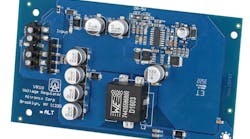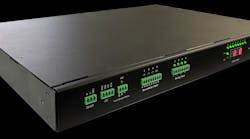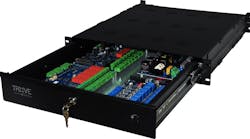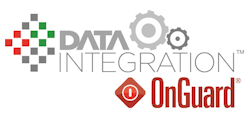Power often goes unnoticed, until we don’t have it. For access control and other connected systems, it’s a critical necessity. Now, thanks to managed power, both security professionals and their end-user customers can reap the rewards of the new value proposition of power – an essential component that keeps systems up and running 24/7.
In its early beginnings, power was a static device with little or no intelligence or integration with other systems or software. Today it’s part of an ecosystem of connected technologies – with the ability to be actively managed for assured connectivity, uptime and proactive notification of current or pending conditions.
Now, power can be network-managed, providing real-time information on the status of powered devices. With an Internet connection or software interface, power can be monitored and serviced remotely, saving time and money from having to send a technician onsite to perform costly field checks. Power’s total visibility also lets users know proactively how their systems are performing – or what they must do to make sure their systems are always up, always connected.
Modern power solutions can predict battery health, exact battery standby time remaining and pre-empt possible downtime with analytics, information and historical data on device status. Managed power services cover several physical elements, including the main power supply, power system outputs, locks, access control modules and standby batteries.
Another capability of managed power is managed monitoring. Managed monitoring encompasses event reports, AC loss notification, service due reminders, impending lock failure alerts, low-battery warnings, insufficient battery standby and more. During the pandemic, being able to remotely access, manage and control systems offered service continuity when buildings were closed or inaccessible, which was invaluable.
Remote servicing is another facet of managed power solutions. Remote servicing capabilities yield information on output supervision, remote scheduled battery load testing, remote power cycling and system health logs/trouble alerts. For example, a short circuit or integrated lock that is drawing more or less power than it should is an indication it is beginning to fail. This information on power and connectivity is transmitted to the user or security integrator for further action.
Continuous power system monitoring creates customized action alerts and reports for system maintenance and management. Alerts are transmitted in formats that include email, XML or Simple Network Management Protocol (SNMP).
Power status monitoring lets systems integrators and end users receive live system alerts. Some of these conditions may also include:
- AC and system fault conditions, such as low or missing AC voltage, low or missing batteries, blown fuses or output voltage out of range.
- An aging or drained battery; battery not meeting stand-by specification requirements.
- Fire Alarm Interface (FAI) activation notification that power was dropped to allow egress on fire alarm signal.
- External room temperatures outside preset limit indicating that the HVAC system may be having issues leading to temperature extremes for critical equipment.
- External event activation for monitoring enclosure tamper switches or other dry contacts.
Accessed through an intuitive web browser interface, the latest remote monitoring and control increases power system ROI; maximizes system uptime; and saves maintenance costs. For the end-user, monitored power means the move to a more comprehensive, proactive network. It offers a lower total cost of ownership (TCO) and yields useful data that ultimately keeps system solutions up and running smoothly.
Software integration and interface control
Managed power can also be integrated directly with industry-leading access control management software, streamlining the administration and control of connected solutions. Direct, native integrations to access control and security management software platforms are made possible with network connectivity.
With an integrated system, power management is available natively and originates from the access control system’s interface. Security integrators can easily add devices into the software platform so real-time alerts appear directly within the interface. Users gain detailed data on the health and viability of power, connected locks and other devices all in one place for simplified management and control.
In addition, users can receive and centrally manage all alerts and notifications through the software, which relays real-time data and analytics on the health and viability of door controller power, lock power and battery condition.
Managed power benefits end users with more reliable and consistent operations, greater uptime and overall better efficiencies for enterprise and campus security, access control and locking solutions.
Being warned before trouble surfaces can mean the difference between a routine maintenance call and a major security breach from an unprotected facility or device. With LifeSafety Power Netlink™ Network Monitoring capability available in the Securitron AQL Series Intelligent Power Supplies, users can proactively receive live system alerts before serious power failures arise, preventing system downtime and maintaining facility security.
Here are other benefits and uses for remote network monitoring:
Monitor and control your power supply from anywhere
Security and facility management teams don’t have to be onsite to diagnose potential problems and can proactively handle any issues, saving time and money. Real-time alerts allow issues to be addressed quickly. Monitoring can be accomplished from the safety and comfort of the home office or with a smartphone or a PC, via the web browser interface.
Check the health status and battery to ensure everything is operating safely and efficiently
Staying apprised of system health daily allows teams to make sure the access control/security system does not go down. With managed power and remote monitoring, the end user is informed about the status of the battery, even if they are not onsite to monitor it so they can proactively address battery maintenance and potential replacement before connectivity is lost or disrupted.
One-click or scheduled remote battery testing
Smart systems can perform a load test, which indicates the actual standby time available in that battery. (A standby time test measures how long the system will stay running when you lose power). Previously, a technician would have to travel to the site and run the test, potentially lasting hours. Testing is scheduled automatically and at regular intervals, or the user can remotely log in to perform the test instantly in just one click.
Monitor lock health continuously
Users and security integrators get alerted before a lock fails, so the facility or campus can maintain the security of their access points and keep the building secure without any downtime.
Intelligent power solutions are interactive systems that can identify potential weaknesses and proactively alert security integrators and end-user customers. They can be integrated with access control software platforms, while the information gleaned from active monitoring and management yields data that assists in maintaining device connectivity across the facility. Remote monitoring and other managed power services yield cost and labor savings – keeping critical systems healthy and powered up for a secure, protected premises.
Michael Bone, the power product manager for ASSA ABLOY companies Securitron and LifeSafety Power, has decades of experience in the life safety and power industries. He joined LifeSafety Power as one of its founding members in 2009 where his roles have included operations, applications and technical support, and marketing.





